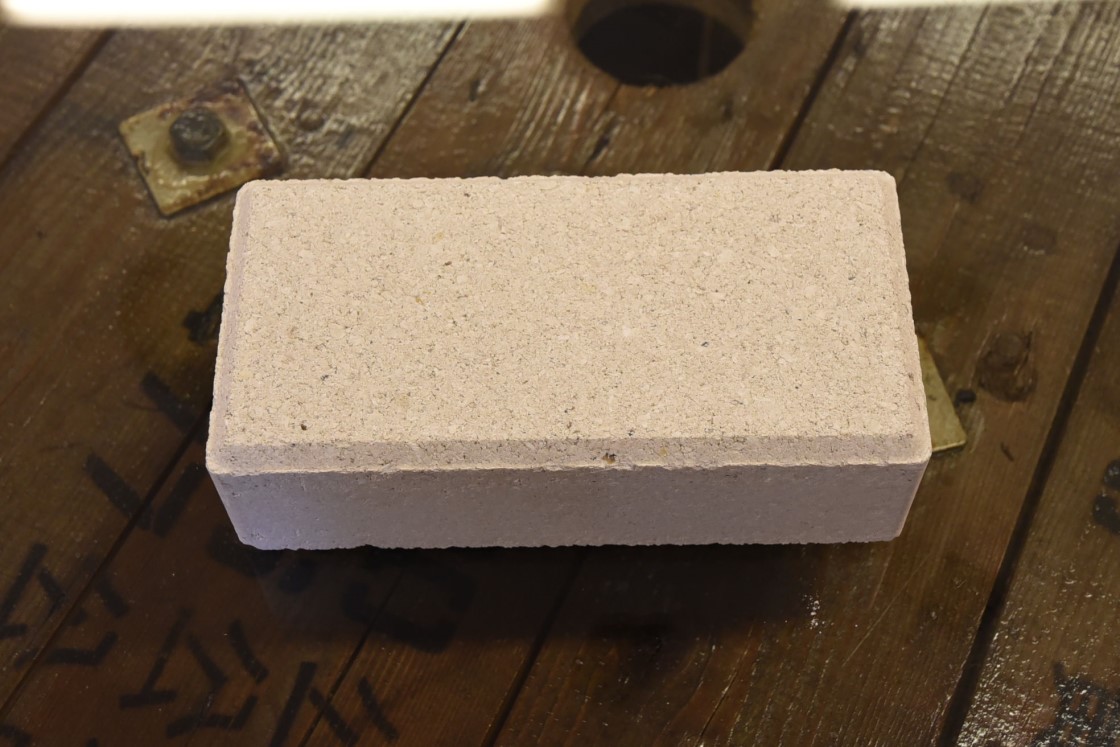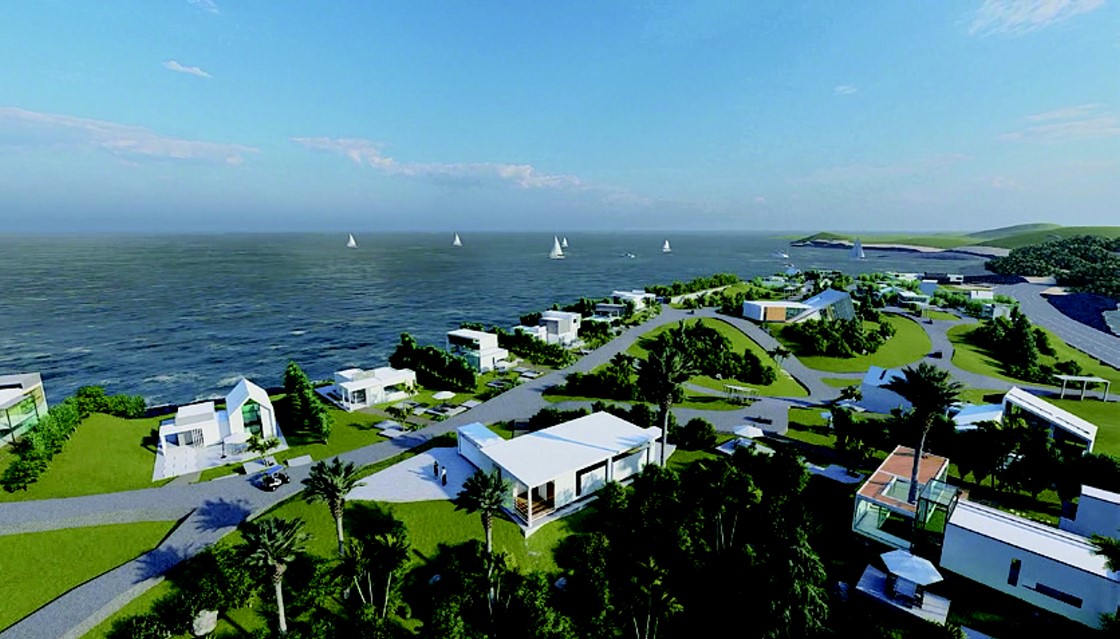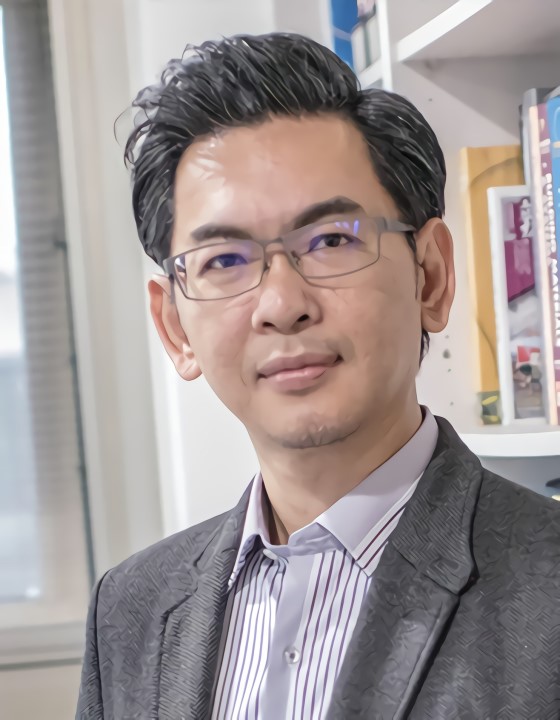低碳永續循環建築的設計,是哲學、科學與藝術的結合
台達電所捐贈的高雄納馬夏民權國小,為國內少數已經達到淨零耗能的永續綠建築案例(圖:台達電提供)
自然是地球上最有效率的有機體,如此的高效率,完全沒有廢棄物,所有的物質在自然界生生不息永續循環,例如一棵大樹,從根部吸收大地的養分,透過光合作用吸收二氧化碳放出氧氣,因而生長茁壯與涵養水土,樹葉凋謝落到地上經過微生物的消化,成為土壤的養分,讓植物再次吸收。想像若能夠用這種觀念設計建築物,其興建過程與方式不會破壞自然環境,它對環境有貢獻而非消耗。
早期的住宅建築大多數具有當地風土元素,這些風土元素,通常反映了在地文化、當地材料、技術工法以及集體美學共識,尤其是原住民建築,絕大多數的原住民文化認為,他們跟大自然的關係是群體和諧的一部分,就精神上來說,原住民會遵循祖先流傳下來不同層級的圖騰來達成這個目標,這些圖騰賦予了原住民一個尊重生態平衡的行為模式與環境。
從相反的角度來看,現代科技通常把大自然當成是一個挑戰的對手,以及一個阻礙進步的障礙,這是我們眼下應該要反思的部分;而如何利用大自然的資源,效法大自然,是我們打造下一代永續綠建築應該要有的思維。因此,建築要能邁向真正永續的關鍵,將取決於我們能否建立起「資源節約技術」與「生態導向觀念」兩者之間的橋樑,以及設計師能否將這些資訊整合轉變成新的「視覺元素」。我們不需要模仿大自然,但需要找出大自然的法則。
目前最接近大自然法則的做法之一,就是循環經濟,循環經濟是一個資源可回復、可再生的經濟和產業系統,也就是大家常聽到的「搖籃到搖籃」的產業模式,以免人類無止境的耗用地球資源。達到循環經濟的做法有很多方式,其中大家最容易理解的是,不走傳統的製造―使用―丟棄的模式(搖籃到墳墓),而是走「產品服務」的方式:顧客買的是產品相關的服務或功能,而不是只買它們的組成材料。以地毯為例,消費者可以長期使用他們生產的地毯,甚至可以永久使用,但當地毯需要更換時,製造商可以回收這塊使用過的地毯,並以折扣價換一塊新的地毯給消費者,或是單純以租用方式使用地毯,而製造商回收使用過的地毯可以再製成新的地毯,甚至在生產技術上強調這產品是健康無毒的,再提供給下一位使用者使用。

廢棄蚵殼做的蚵殼磚(圖片來源:澎湖縣政府)
在全球進入氣候緊急的當下,任何開發行為都可能存在一定程度的氣候風險,尤其在海岸邊進行開發,因此在建築設計上反應氣候議題,無論是節能減碳、安全防災、生態環保、綠能使用與資源循環等,都是我們在設計建築物應該要考量的重點,也就是多了永續性與韌性(Resilience)的考量;而傳統設計的優點:建築美學及營建技術仍然是我們不可偏廢的重點,然而,環保與永續的基礎本質,以及以人為本的設計理念,既傳統又新穎,乃是設計過程的靈魂,讓我們得以重伸建築領域裡較深遠的價值與意義,也就是說,永續性設計已經是一種哲學,一種科學與藝術的結合,遠超過建築設計與營建的範疇。

高雄納馬夏民權國小(圖:台達電提供)
這次主辦單位舉辦的競圖主題為青灣山城VILLA國際競圖,提到Villa常讓我們想到印尼海島上的建築,以及舒適慢活的住宿體驗。Villa一字源自於拉丁語,中文是別墅的意思,由一棟或多棟住宅所組成,近代常用於指海邊或山林裡的高檔住宿型別墅建築,且通常又是提供短期旅遊住宿的民宿,或是由飯店集團打造的飯店型Villa。既然是提供住宿行為的別墅建築,且又常位於海邊或山林裡,但在永續環保的前提下,打造一棟好的Villa建築,不僅需要顧及建築美學,也需要顧及建築物在全生命週期中,對於周邊環境以及各種排放的影響,包括汙水排放、溫室氣體排放、廢棄物產生與排放等。
要如何設計一棟永續循環的Villa建築?正如大樹所給我們的啟示,以下七項簡單原則可參考:'
- 自給自足所需的水與能源;
- 因應所在地的環境作對應的設計,並隨著地理或氣候的變化而進化;
- 達到無污染的目標,不製造對房屋內其它活動行為或對緊鄰環境無用的廢棄物;
- 促進所有居住者或使用者的健康與幸福,像一個健康的生態系統;
- 由各項整合的系統建構而成,以提高使用效率與舒適度;
- 改善而非傷害當地生態系統的健康與多樣性;
- 優質美觀,啟發我們讓我們懷抱夢想。

青灣villa區示意圖(亞青海洋文創提供)
所有的策略都是用來完成最終目標:建築物可以回饋環境,支持並復育自然棲息地與人類健康,並且提高生活品質。當開發商、所有權人、設計師、工程師及承包商作出永續性的選擇,這些策略的變化為設計出健康、美麗、有利潤的產品及系統,他們除了將獲得應得的利潤,也將會得到遠超過對環境保護或社會責任的滿足感。但是,最重要的一點,就是設計師必須相當具前瞻性,深思熟慮的來面對他們的重要課題。
我們相信,眼下最嚴肅的課題之一,是如何維持所有物種的永續生計?在目前保守的營建市場與艱困的經濟環境,即便要改變任何一項工法都是多麼艱難的事,當我們能夠離開都市,看著山、看著海來思考,如果我們都把這樣的認知放在心裡,那就會很容易理解,好的設計理念將具有多麼強大的改變力量!
再者,我們也希望透過好的設計,達到永續教育的目的,並透過社會大眾與遊客,將永續循環的理念傳播到世界上每一個角落。
(文:陳重仁)
_
The design of low-carbon sustainable buildings is already a philosophy, a combination of art and science
Nature is the most efficient organic body on earth. It’s so efficient that there is no waste at all, and all materials live in a continuous natural cycle. A tree, for example, absorbs nutrients from the earth through its roots and emits oxygen by absorbing carbon dioxide through photosynthesis, thus growing strong and nourishing the soil and water; its leaves wither and fall to the ground, where they are digested by microorganisms and become soil, which is then absorbed again by other plants. Imagine a building designed using this concept, implementing a process and manner of construction which avoids causing any damage to the natural environment, contributing to the environment rather than consuming it.
Most of early residential buildings embody the natural conditions and social customs of the local area. These vernacular elements often reflect local culture, local materials, techniques, and a collective aesthetic consensus, and this is especially so in Indigenous architecture. The vast majority of Indigenous cultures consider their relationship with nature as part of a group harmony. Spiritually, Indigenous people follow the different levels of totems handed down from their ancestors to achieve this goal. These totems give Indigenous people a pattern of behavior and an environment which respects ecological balance.
Looking at this issue from the opposite perspective, modern technology often views nature as more of a challenge and an obstacle to progress, and this is something we should reflect on today; in creating the next generation of sustainable green buildings, we should be thinking about how to use nature’s resources and follow its example of sustainability. Therefore, the key to truly sustainable architecture will depend on whether we can establish a bridge between “resource-saving technologies” and “eco-oriented concepts,” and whether designers can integrate this information into new “visual elements.” We don’t need to imitate nature, but we do need to figure out its laws.
One of the closest practices to the laws of nature at present is the circular economy. A circular economy is an economic and industrial system in which resources are recovered and regenerated, or the often-discussed “cradle to cradle” industrial model, so that humans do not endlessly consume the earth’s resources. There are many ways to achieve a circular economy, and one of the easiest to understand is to avoid following the traditional make-use-dispose economy (Cradle to Grave), but rather to follow the “product service” approach: customers buy products for their related services or functions, not just for their component materials. For example, consumers can use their carpets for a long time - even forever. However, when the carpet needs to be replaced, the manufacturer can recycle the used carpet and exchange it for a new one at a discounted price, or simply rent out a carpet. The manufacturer can recycle the used carpet into a new carpet, emphasizing healthy and non-toxic production technology, before providing the new carpet to the next user.
In this time of global climate emergency, any development may have a certain degree of climate risk. In particular, development along the coast is a key consideration in designing buildings that respond to climate issues, whether it be energy conservation, carbon reduction, safety and disaster prevention, ecological protection, green energy use and resource recycling, and so on. In other words, we must also consider sustainability and resilience. The advantages of traditional design such as architectural aesthetics and construction techniques are still essential elements which we cannot overlook. However, the fundamental nature of environmental protection and sustainability, as well as the concept of human-centered design, both traditional and innovative, are the soul of the design process, allowing us to reassert the deeper values and meanings of the architectural field. In other words, sustainable design is already a philosophy, a combination of science and art, that goes far beyond the realm of architectural design and construction.
The theme of this year’s competition is the Argo Island Villa International Design Competition. Mentioning the word “villa” often reminds us of the architecture of Indonesian islands and the comfortable and slow living experience of staying in a hotel or similar accommodations. The word “villa” comes from Latin and typically refers to an estate that consists of one or more residences, often used in modern times to refer to upscale accommodations at the beach or in the mountains, and is usually a bed and breakfast lodging that provides short-term travel accommodations or a hotel-type villa built by a hotel group. Since villas provide accommodation and are often located on the beach or in the mountains, under the premise of sustainability and environmental protection, a good villa design needs to take into account not only the aesthetics of the building, but also the impact of the building on the surrounding environment and various emissions during its entire life cycle, including sewage, greenhouse gas, waste generation and emissions.
So how are we able to design a sustainable villa? The following seven simple principles, as inspired by the aforementioned example of a tree, can be considered:
- Self-sufficiency in water and energy requirements.
- A villa design which takes into account the environment of the location and has the ability to evolve with geographical or climatic changes.
- To achieve the goal of being pollution-free, without creating waste that isn’t useful to other activities in the villa or to the immediate environment.
- To promote the health and well-being of all occupants or users, creating a healthy ecosystem.
- Constructed with and composed of integrated systems to improve efficiency and comfort of use.
- Improve, rather than harm, the health and diversity of local ecosystems.
- Quality aesthetics that inspire us to pursue our dreams.
All strategies are designed to accomplish the ultimate goal: buildings that give back to the environment, support and restore natural habitats and human health, and improve quality of life. When developers, owners, designers, engineers, and contractors make sustainable choices, these strategies change to aid in the development and design of healthy, beautiful, and profitable products and systems. In addition to the profits they deserve, they will also gain a sense of satisfaction that goes far beyond environmental protection or social responsibility. But the most important point is that designers must be forward-thinking and thoughtful about the important issues they face.
We believe that one of the most serious issues at hand is how to maintain a sustainable livelihood for all species. In the current conservative construction market and difficult economic climate, it’s incredibly difficult to change even one single method. When we can get out of the city and look at the mountains and the sea and think deeply about the world we wish to live in, if we are all able to take this knowledge to heart, then it becomes easy to understand how powerful a good design concept can be for change!
Furthermore, we hope that through good design, we can achieve the goal of sustainable education and, through the public and tourism, spread the concept of sustainable cycles to every corner of the world.

陳重仁
現職
SSDC澄毓綠建築設計顧問公司 總經理
Enertek川昱永續環控有限公司 執行長
台灣綠領協會(TGCA)名譽理事長
香港中國城市住宅研究中心台北分中心 副秘書長
中國綠色建築評價標識台灣專家委員會 委員
學歷
美國哈佛大學設計研究所碩士
國立成功大學建築系建築學士
榮譽
美國綠建築協會院士 USGBC LEED Fellow
美國能源與環境設計專業認證(LEED AP, BD+C)
第二屆華人十大傑出專案經理
國際專案管理師(PMP)


